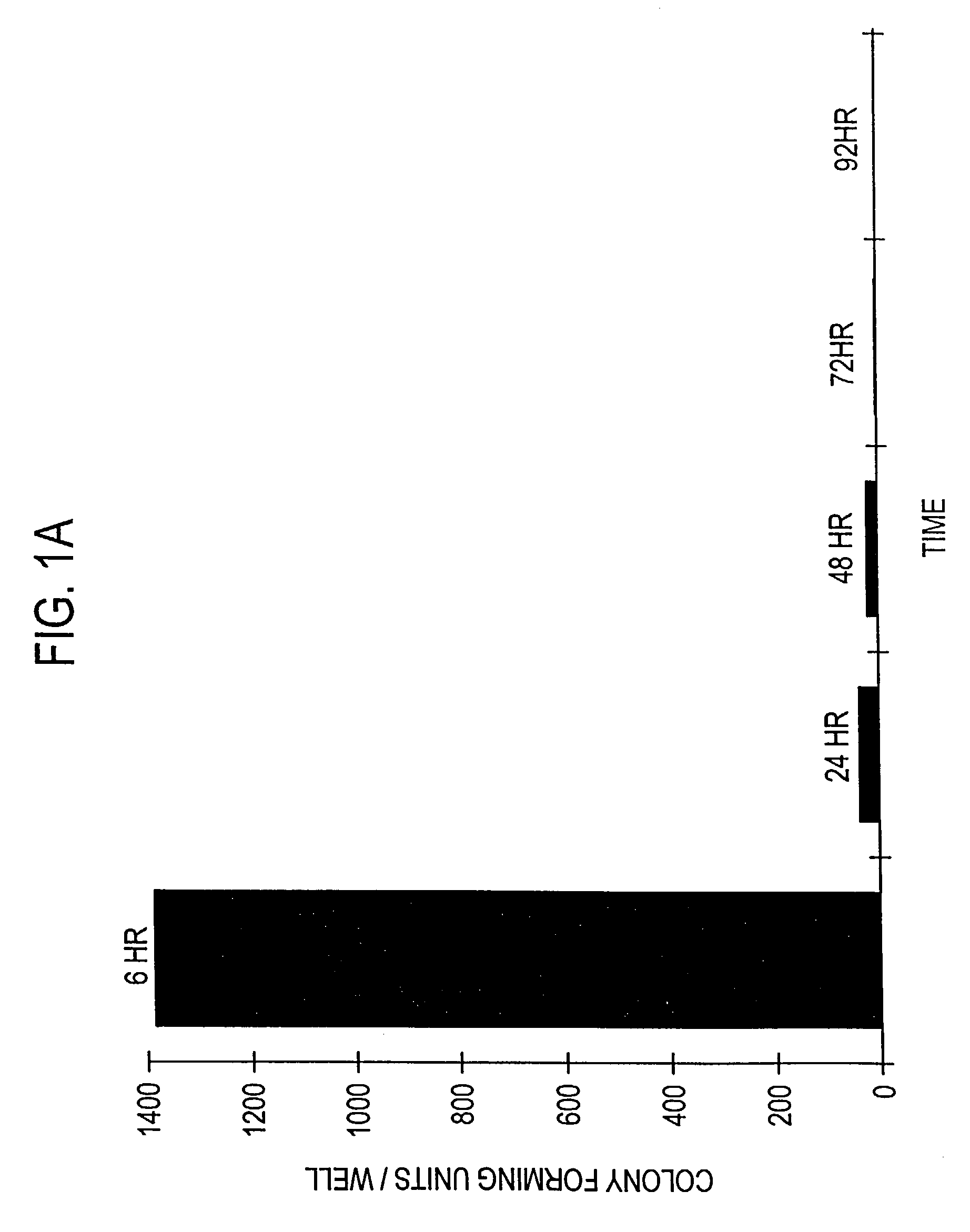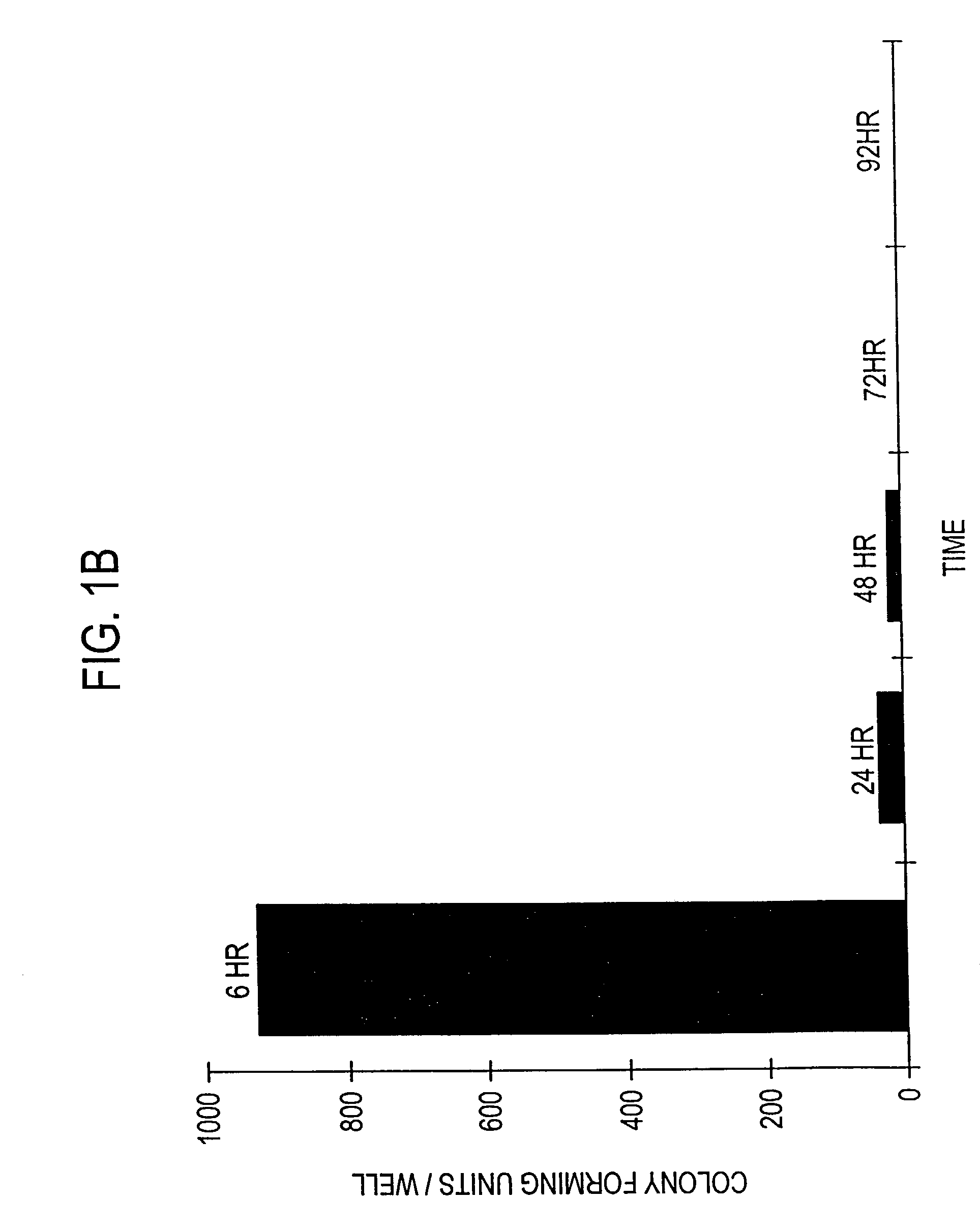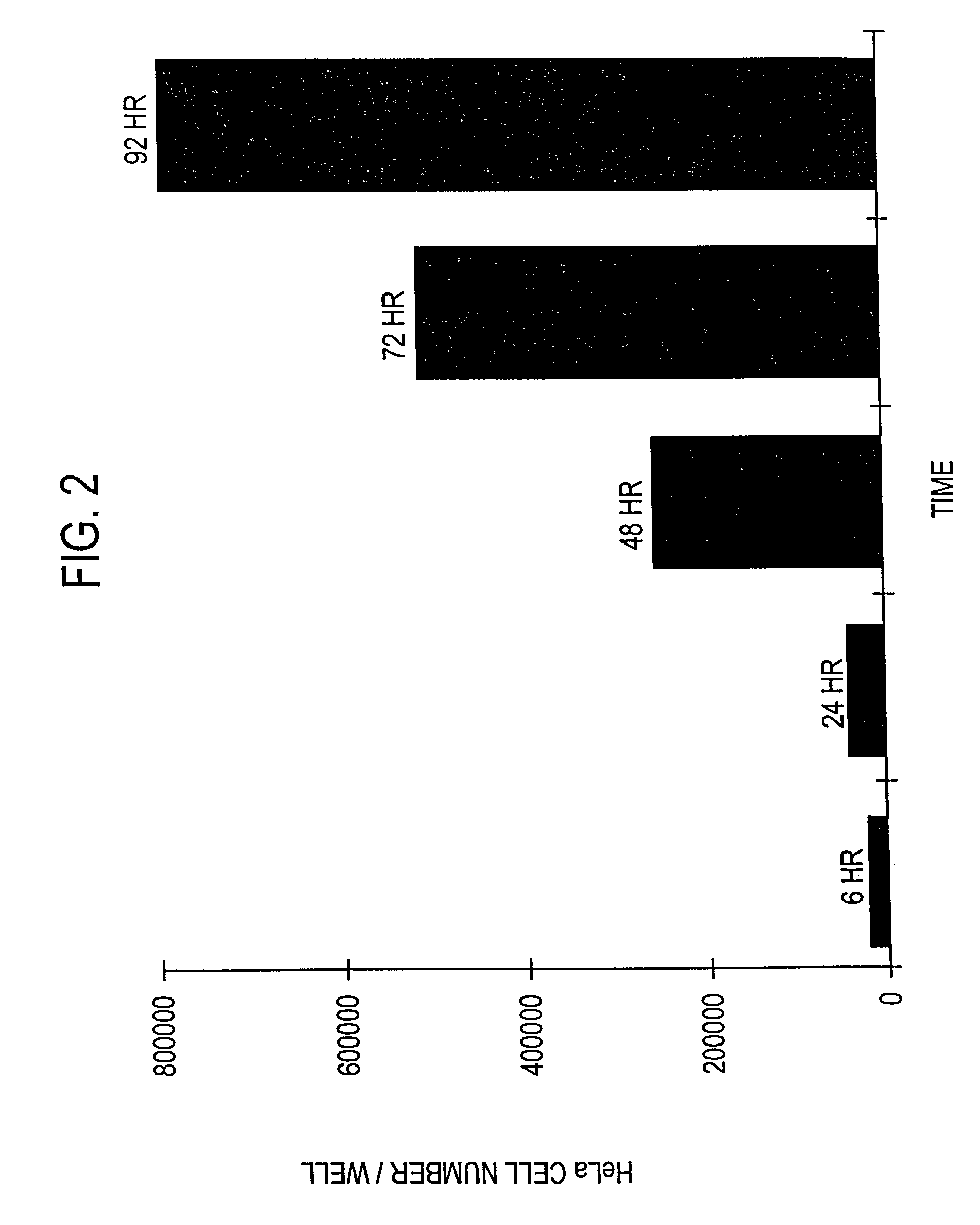Method for introducing and expressing genes in animal cells, and live invasive bacterial vectors for use in the same
a technology gene expression, which is applied in the direction of dna/rna vaccination, biocide, antibody medical ingredients, etc., can solve the problems of ineffective dna delivery to animal cells, ineffective delivery of dna to parenteral sites, and ineffective delivery of eukaryotic expression cassette to mucosal tissue,
- Summary
- Abstract
- Description
- Claims
- Application Information
AI Technical Summary
Benefits of technology
Problems solved by technology
Method used
Image
Examples
example 1
Bactofection Requires a Eukaryotic Expression Cassette
[0131]The following experiment was carried out to demonstrate that infection with invasive bacteria is able to introduce a foreign gene into animal cells, which is then expressed by the animal cells (hereinafter “bactofection”).
[0132]A. The Eukaryotic Expression Cassette
[0133]An attenuated Shigella flexneri strain containing both ΔaroA and ΔvirG attenuating lesions (Noriega et al, supra) was transformed with either psvβ-gal (Promega Corporation, Madison, Wis.), which contains the reporter gene β-galactosidase (β-gal) (hereinafter “pβ-gal+SV”), or a derivative thereof which lacks the viral derived SV40 eukaryotic promoter region (hereinafter “pfl-gal-SV”), as described by Promega Corp. (TB094, Promega Corp.). Both constructs also contain the prokaryotic Escherichia coli gpt promoter which enables expression of β-gal by S. flexneri.
[0134]pβ-gal-SV was obtained by removing the SV40 promoter from pβ-gal+SV by HindIII and NcoI restri...
example 2
Bactofection in Various Cell Types
[0152]To ascertain the ability of bactofection to transform cell lines other than the epithelial like human cervical HeLa cells, two additional epithelial like cell lines and one kidney cell line were subjected to bactofection.
[0153]More specifically, Int 407 (ATCC No. CCL-6), a human fetal ileum / jejunal cell line; CaCo-2 (ATCC No. HTB-37), a human colonic cell line; and MDCK (ATCC No. CCL-34), a canine kidney cell line were cultured and infected with S. flexneri containing either pβ-gal+SV or pβ-gal-SV, and evaluated for β-gal activity 24 hours post-bactofection as described in Example 1 above for the HeLa cells.
[0154]Using pβ-gal+SV, transformed β-gal positive stained cells were obtained for the Int 407 and CaCo-2 cells, but, as expected, not for the MDCK cells. That is, bactofection appears to mirror the natural invasion characteristics seen by wild-type Shigella sp., as such Shigella very rarely causes infection in dogs, and normally is only fou...
example 3
Bactofection-Mediated Expression of Various Foreign Antigens
[0156]The following experiment was carried out to demonstrate that bactofection is able to mediate expression of various foreign antigens in HeLa cells, as well as in human peripheral blood derived mononuclear cells.
[0157]A. The Eukaryotic Expression Cassette
[0158]The S. flexneri ΔaroΔvirG strain was transformed with the commercial eukaryotic reporter plasmid pGFP-C1 (Stratagene, La Jolla, Calif.). This plasmid contains a viral derived CMV eukaryotic promoter driving the expression of a gene encoding the Aeguorea victoria jellyfish green fluorescent protein (GFP) (Wang et al, Nature, 369:400-403 (1994)). Plasmid pGFP-C1 does not contain a prokaryotic promoter in the correct location to express GFP in the prokaryotic host, i.e., the GFP gene is not located in a functional prokaryotic expression cassette. Only when the plasmid is delivered into eukaryotic cells is GFP produced from its eukaryotic expression cassette.
[0159]In ...
PUM
| Property | Measurement | Unit |
|---|---|---|
| pH | aaaaa | aaaaa |
| incubation time | aaaaa | aaaaa |
| volume | aaaaa | aaaaa |
Abstract
Description
Claims
Application Information
 Login to View More
Login to View More - R&D
- Intellectual Property
- Life Sciences
- Materials
- Tech Scout
- Unparalleled Data Quality
- Higher Quality Content
- 60% Fewer Hallucinations
Browse by: Latest US Patents, China's latest patents, Technical Efficacy Thesaurus, Application Domain, Technology Topic, Popular Technical Reports.
© 2025 PatSnap. All rights reserved.Legal|Privacy policy|Modern Slavery Act Transparency Statement|Sitemap|About US| Contact US: help@patsnap.com



